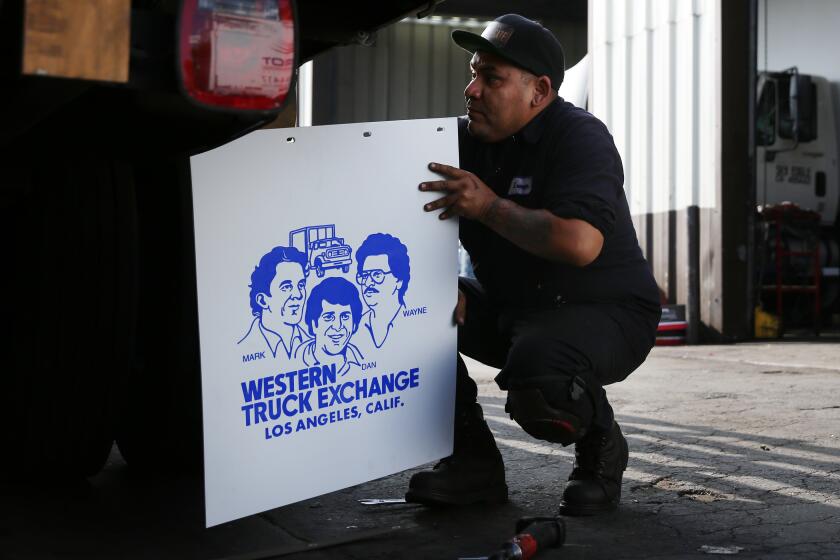Felix, Little Man and other beloved Los Angeles logos
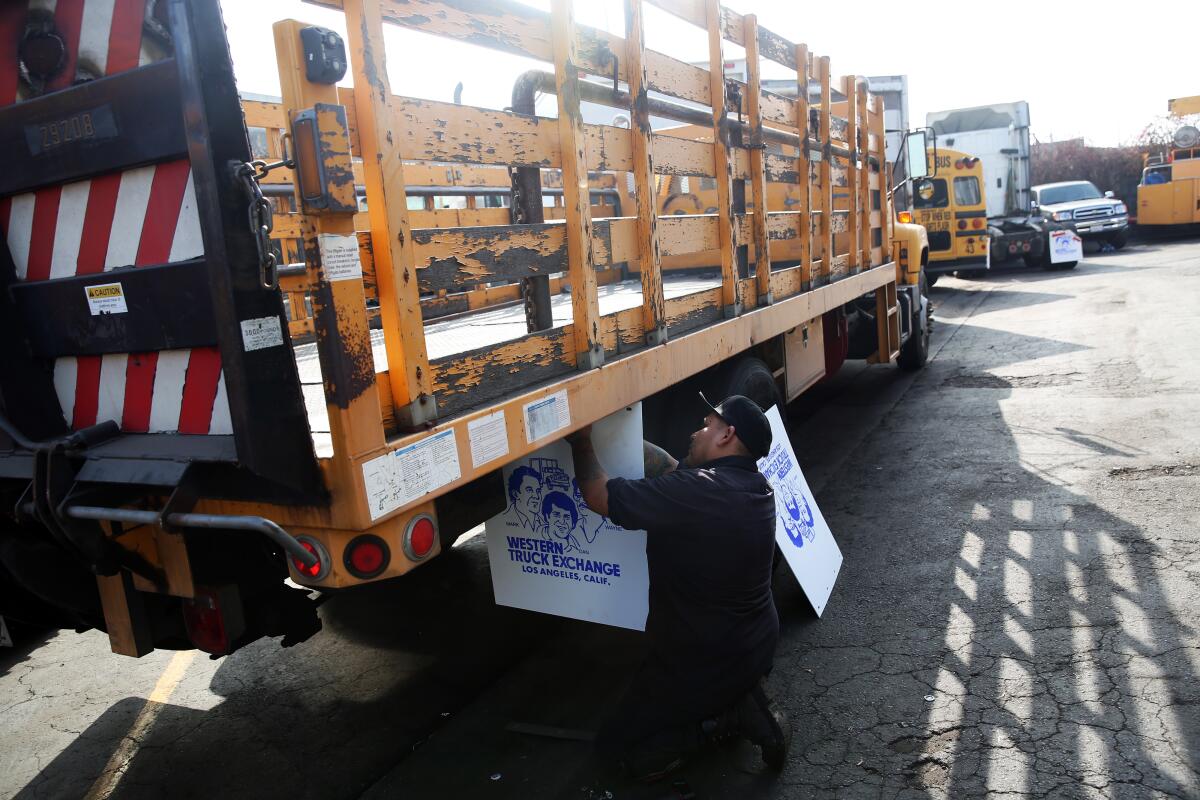
Western Truck Exchangeâs smiling retro trio of Wayne, Dan and Mark make up one of Los Angelesâ best-known company logos, traversing the city on the mudflaps of thousands of trucks.
But there are other local businesses with beloved designs. Here are a few, along with their back stories, from one nearly a century old to a more current symbol of the social media era.
For the record:
11:22 a.m. Jan. 3, 2020An earlier version of this story said that the Felix Chevrolet sign had been designated a historic cultural monument. The Los Angeles City Council declined to accept the recommendation of the cityâs Cultural Heritage Commission that the sign be designated a monument.
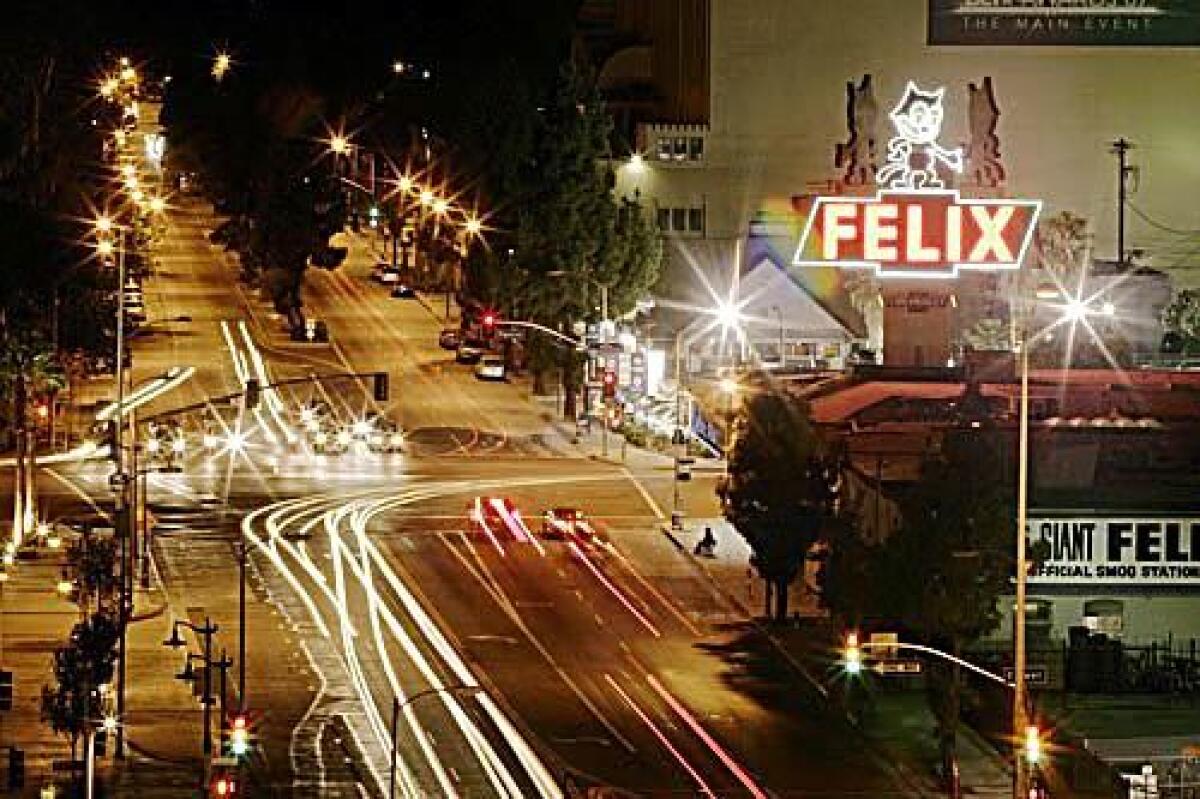
Felix Chevroletâs wonderful cat
Felix the Cat, âthe wonderful wonderful cat,â to quote the cartoonâs long-ago theme song, was the first superstar cartoon character and reigned until he was eclipsed by a big-eared mouse named Mickey.
In 1921, Felix co-creator Pat Sullivan and a friend decided to help each other out on the promotion front, using the latterâs brand-new downtown L.A. auto dealership. The friendâs name was Winslow B. Felix, and Felix Chevrolet has carried Felix the Cat as its official mascot ever since.
In the 1950s, painter Wayne E. Heath was commissioned to create a sign for the dealershipâs roof. Aerospace engineers were brought in to make sure the huge neon (now LED) Felix sign â with three 50-by-50-foot sides â was anchored sturdily enough to stay on the roof in a high wind, said Greg Iverson, Felix Chevroletâs internet and marketing director.
The South Figueroa Street sign is easily visible from the Harbor Freeway and parts of downtown. In July 2007, the sign was designated a historic cultural monument by the cityâs Cultural Heritage Commission, but the Los Angeles City Council subsequently declined to adopt the commissionâs recommendation.
Cartoon caricatures of Wayne, Dan and Mark make up one of Los Angelesâ most iconic company logos.
Felix Chevrolet branded items can be found for sale online, bringing in $10,000 or more a month to the dealership, Iverson said. Ten percent of the revenue, he said, goes to the current holder of the rights to Felix the Cat, DreamWorks Animation, which is owned by Comcastâs NBCUniversal division.
The biggest seller is Felix Chevrolet license plate frames and inserts, favored by lowrider clubs around the world, he said.
âI just finished the L.A. car show,â Iverson said. âThey had 12 lowriders on display down there, and seven of them had our license plates on.â
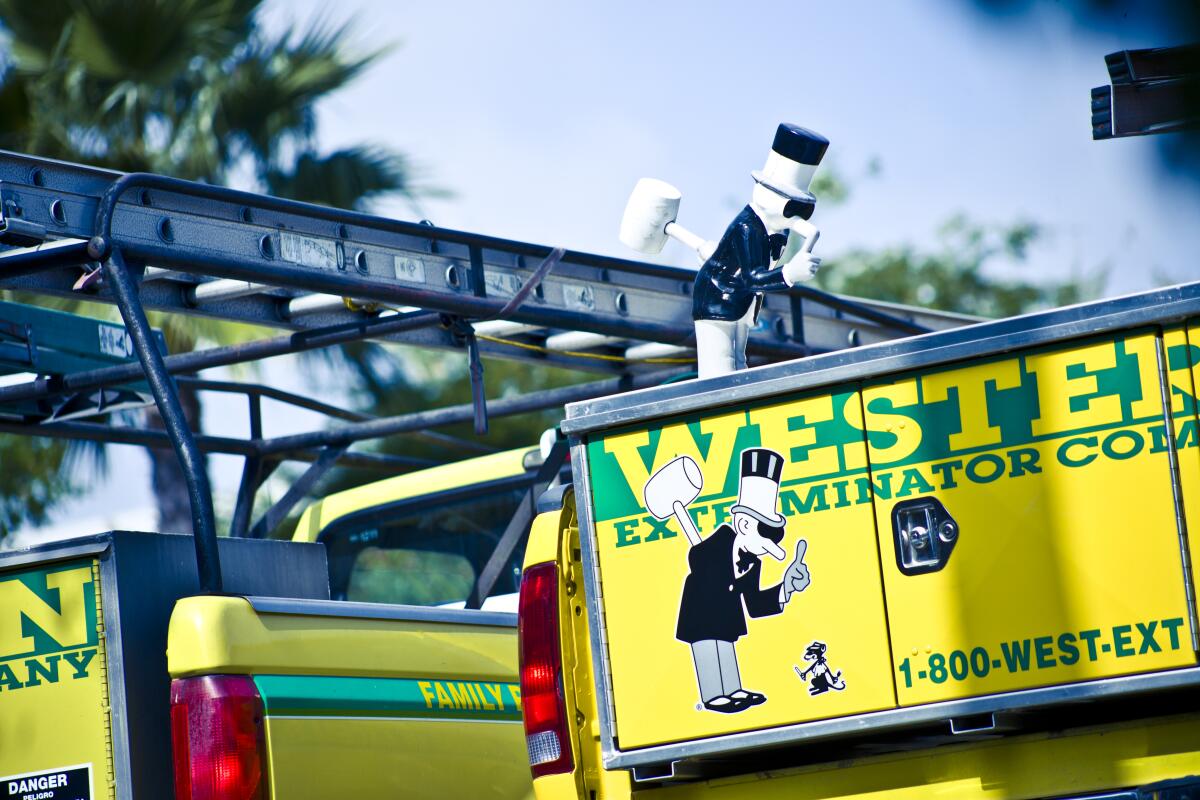
Western Exterminatorâs Little Man
Western Exterminatorâs mascot, dubbed Little Man, first appeared in 1931, 10 years after the pest extermination firm was founded in Los Angeles. Dapper in his black tux, wingtips, gloves and top hat, Little Man holds up a warning finger at his arch nemesis, Menace Mouse, with a large mallet hidden behind his back to counter the rodentâs small knife and fork.
Sales representatives for the Yellow Pages, then the preeminent business ad platform, told owners Carl Strom and Ray Lovejoy that Western Exterminatorâs sales would improve if they added a logo or a trademark to their advertisement.
Artist Vaughan Kaufman was commissioned to design the character, which was originally called Kernel Kleenup and then Inspector Holmes, the supposed distant cousin of a British fellow named Sherlock. Eventually the company settled on Little Man as a moniker.
In 2012, Western Exterminator was purchased by British firm Rentokil Initial. While that deal was in the works, âI was on a plane flying to Los Angeles, and the gentleman seated next to me asked what I was doing,â recalled John Myers, chief executive of Rentokil North America, based in Charlotte, N.C. âWhen I told him that I was working with Western Exterminator, he immediately exclaimed, âThe little man with the hammer!â
âIt became very clear to me at that moment the Little Man was so much more than a logo. The Little Man is part of our team, a brand ambassador, salesman and a customer experience expert all in one,â Myers said. âThe Little Man is an iconic figure recognized around the world, and we are so proud to have him represent Western Exterminator.â
There are 17½-foot statues of Little Man above the Hollywood Freeway in Los Angeles, along the Bayshore Freeway outside of San Francisco and near Western Exterminatorâs main office in Phoenix. He can also be found on every Western Exterminator pest control truck.
But the logo has never been confined to those roles. Little Man has been found on motorcycle gang tattoos and even accompanied the rock band Van Halen in 1984 on its nine-month North America concert tour, rocking out in a stage cartoon and adorning the groupâs backstage and after-show passes, which have become a sold-out collectorâs item. One of the band members was a client of the company.
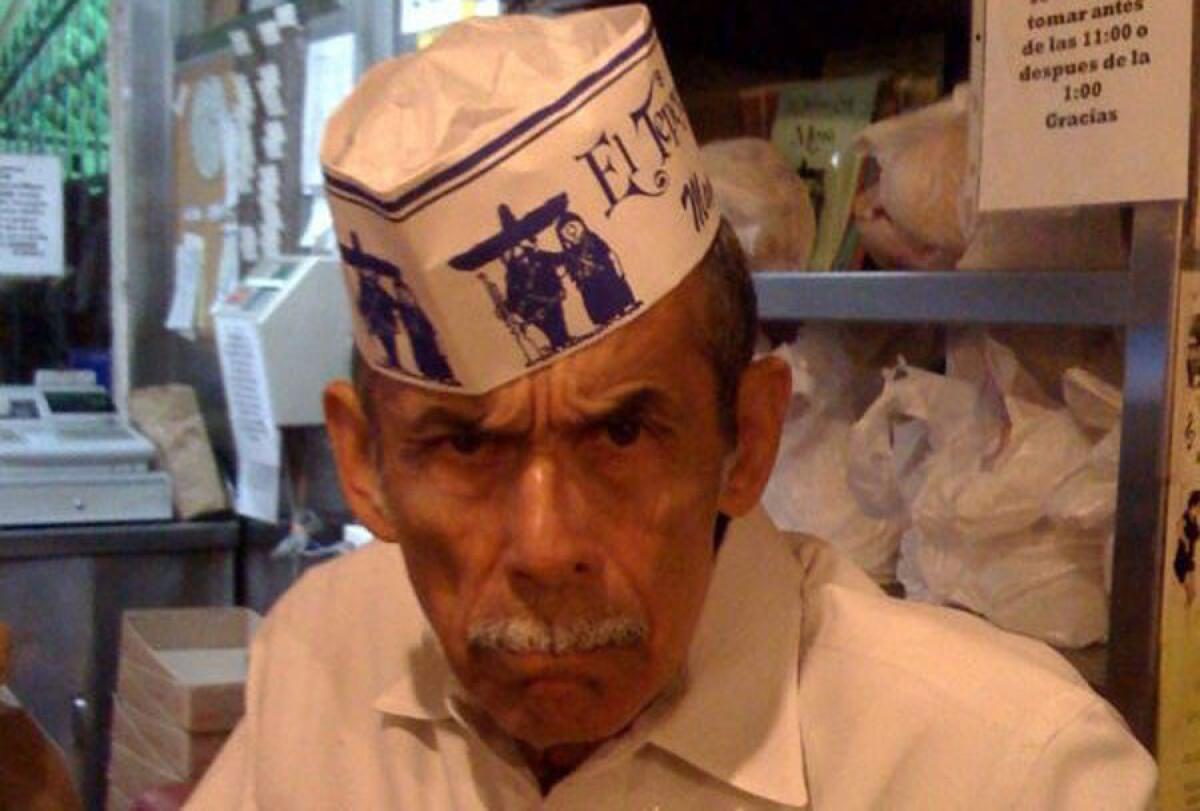
El Tepeyac Cafeâs guardians
Elena Rojas still remembers the day in 1986 when a female customer announced that she had flown her boyfriend in from Denver so they could enjoy freshly made machaca burritos at one of Los Angelesâ oldest continuously operating Mexican restaurants. El Tepeyac Cafe opened in 1955. The woman couldnât remember the restaurantâs name, but she knew to ask directions to the place with the distinctive caricature logo posted outside: a man in a huge sombrero standing with a woman and resting a rifle butt on the ground.
After wolfing down the food, Rojas said, the couple ordered 10 burritos to go before heading off to the flight back to Denver.
The restaurantâs logo dates to the early 1960s, Rojas said. A student from a local community college drew it to look like Rojasâ father, Manuel, who founded the restaurant, and his sister.
âHe was dressed in a charro suit like they wear in the mariachi bands, and she was wearing a Mexican dress. He made them look a little like rebelsâ with bandoliers across their chests. âIt was done in fun and my dad liked it and we started using it,â she said. âEveryone recognizes it.â
Manuel Rojas died in 2013 at age 79. Now Elena Rojas runs the restaurant, which built its reputation on gigantic burritos, including the Hollenbeck, popular among LAPD officers serving in that patrol division.
âHe embraced everyone who came to the restaurant,â Rojas said. âPeople thought of him as a gift from God.â
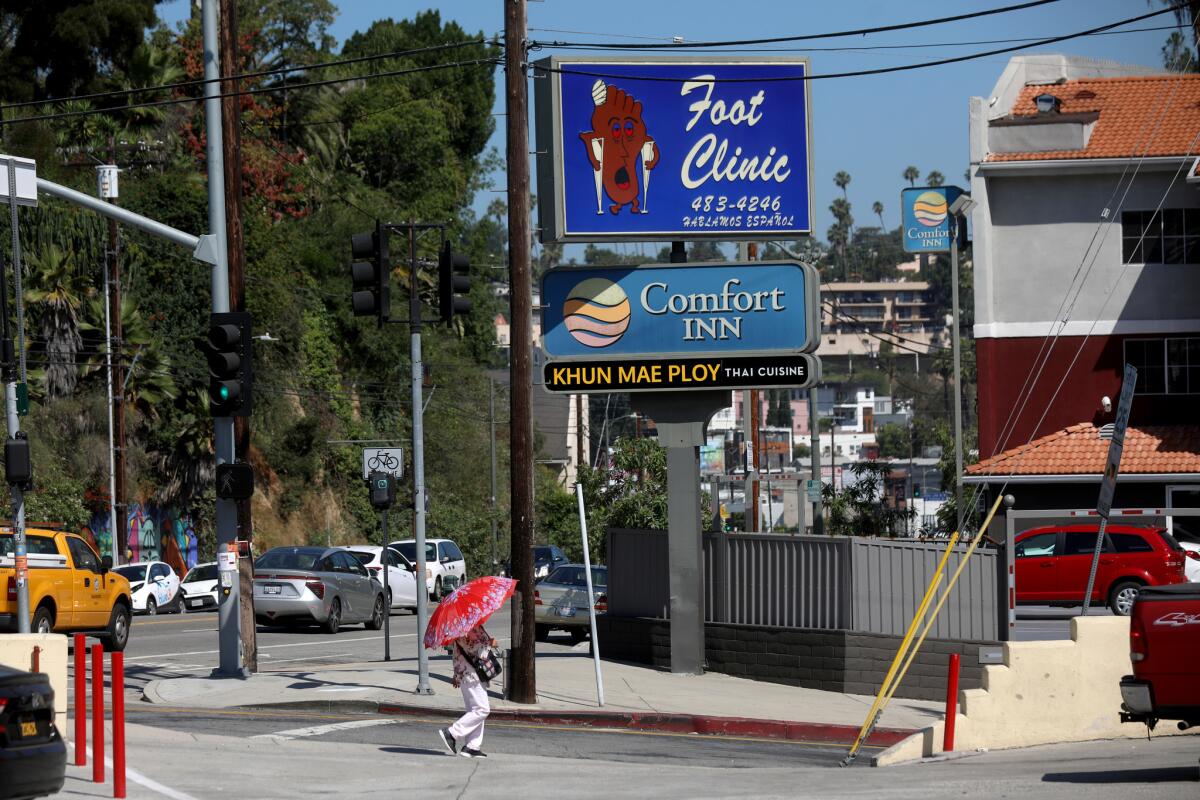
Happy Foot Sad Foot
For nearly 35 years, the Happy Foot Sad Foot sign advertised a Silver Lake podiatry clinic on Sunset Boulevard and Benton Way, but it was removed in September after the clinic relocated.
On one side of the rotating rectangle, a cartoon foot â the happy foot â grins and raises tiny fists in triumph. On the other side, a sad foot grimaces as it hobbles on flimsy crutches.
The sign was beloved in the neighborhood and regarded by some superstitious fans as a predictor of the near future. Seeing the happy foot first gave hope for a great day ahead. Seeing the sad foot first, not so much.
Barry Richman, the original clinic owner, who based the design on a patientâs sketch, told the L.A. Times in 1999 that the signâs only power was attracting customers, but he didnât begrudge others their spin on it. âPeople can make up any kind of craziness they want,â he said, âbut I did it just for fun.â
Current owner Thomas D. Lim hopes to mount the sign at his new location, but the landlord so far isnât keen on the idea. In the meantime, the sign is on display inside the Y-Que Trading Post on Vermont Avenue in nearby Los Feliz, where customers often have to be told that they canât buy it.
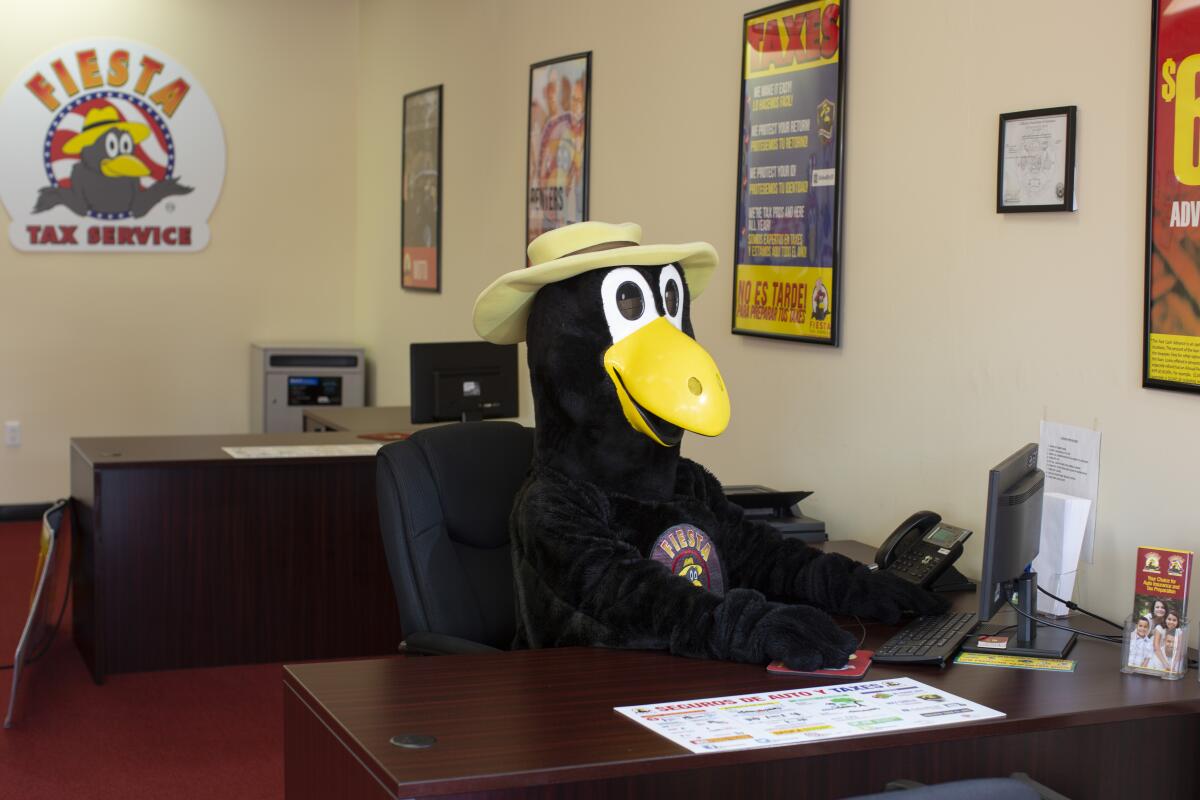
Fiesta Auto Insuranceâs magpie
Founded in 1999 in Long Beach, Fiesta Auto Insurance sells automobile insurance and tax preparation services, often in Latino neighborhoods, with the help of a black bird in a yellow hat, its wings assuming a comedic shrugging pose.
Most people think the bird is a crow, said Carlos Gil, director of operations for Fiesta Franchise Corp., now based in Las Vegas.
âItâs actually a magpie, inspired by the cartoon characters Heckle and Jeckle,â Gil said, referring to the yellow-billed avian cartoon pair that made their postwar animation debut in 1946 in the Terrytoons cartoon âThe Talking Magpies.â
âThe idea for the logo came together with the help of some of our original franchisees,â Gil said, starting out with âa dodo bird costume. We didnât want to use a real movie star or a sports player because we had all heard horror stories about having your company tied to a person in a scandal. Humans make those kinds of mistakes. Cartoon characters typically donât.â
From its modest Southern California origins, Fiesta has enjoyed steady growth. In 2006, the company started offering franchises. It now has more than 210 offices in California and eight other states: Colorado, Florida, Illinois, New Mexico, Ohio, Pennsylvania, Tennessee and Texas. Counting full-time employees and franchisees, there are about 600 people representing the brand, Chief Executive John Hollar said.
Max the Magpie is prominent on company websites, and most franchises have someone in costume making the rounds with customers or drawing attention to the business by walking the sidewalk and parking lot, waving at passersby and exhorting visitors to come inside.
How often are customers drawn in because of the magpie? âIt happens all the time,â Gil said. âIâve seen people taking selfies with the bird before they even come into the office.â
Snapâs Ghostface Chillah
The first logo for the company then known as Snapchat was designed by future billionaire Evan Spiegel, CEO of the company he created in 2011 with Bobby Murphy while they were students at Stanford University.
The ghost logo conveys the concept of the messaging app, which automatically deletes most messages and photos once theyâre viewed.
Spiegel designed the logo in one evening, creating a white ghost with a silly face on a yellow background and the name Ghostface Chillah, inspired by Ghostface Killah, the stage name of a member of the hip-hop group Wu-Tang Clan.
The logo has evolved since it debuted, starting out with a quirky smile and a red tongue poking out. A subsequent version got rid of the face. A third version added a thicker border. The one constant has been the shade of the yellow background, which the company says is bright and cheerful without glare that might tire a personâs eyes.
âOur logo, the ghost Chillah, has been an important part of Snapchatâs visual identity since the early days of the app,â said Elizabeth Markman, director of product communications at Snap Inc. âWe recently updated it with a bolder outline and a cleaner shape.â
More to Read
Inside the business of entertainment
The Wide Shot brings you news, analysis and insights on everything from streaming wars to production â and what it all means for the future.
You may occasionally receive promotional content from the Los Angeles Times.
